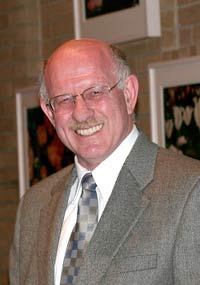
Handy Links
SLAC News Center
SLAC Today
- Subscribe
- Archives: Feb 2006-May 20, 2011
- Archives: May 23, 2011 and later
- Submit Feedback or Story Ideas
- About SLAC Today
SLAC News
Lab News
- Interactions
- Lightsources.org
- ILC NewsLine
- Int'l Science Grid This Week
- Fermilab Today
- Berkeley Lab News
- @brookhaven TODAY
- DOE Pulse
- CERN Courier
- DESY inForm
- US / LHC
SLAC Links
- Emergency
- Safety
- Policy Repository
- Site Entry Form

- Site Maps
- M & O Review
- Computing Status & Calendar
- SLAC Colloquium
- SLACspeak
- SLACspace
- SLAC Logo
- Café Menu
- Flea Market
- Web E-mail
- Marguerite Shuttle
- Discount Commuter Passes
-
Award Reporting Form
- SPIRES
- SciDoc
- Activity Groups
- Library
Stanford
Around the Bay
Дορφан Today
 Москвả 2pm, July 31, 2006
Москвả 2pm, July 31, 2006
Overlooking the Moscow River at Leninsky Avenue 32A stands an immense, modern building that houses the Russian Academy of Sciences. At 8:45 a.m. this morning, its main entrance was clogged with 1100 particle physicists eagerly making their way to the first morning session of the XXXIII International Conference on High Energy Physics (ICHEP06). Accompanying family members and significant others queued up for the busses that took them on today's excursion.
It is the fifth day of the conference, which has been expertly and warmly hosted by our Russian colleagues. The first three days were devoted to countless sessions, held in parallel, where individual physicists presented their and their colleagues' work in a forum optimized for sharing the details and nuances of their research. Such smaller, focused sessions promote pointed questions and substantive debate regarding the new results. But for the final three days, which started this morning, the format switches to plenary sessions, with all attendees gathering in the massive Main Hall, where pre-selected speakers sequentially summarize sub-topics of the vast landscape that comprises high energy physics. Each summary speaker draws on the material presented in the parallel sessions, highlighting the most exciting results and making connections, as appropriate, between them.
What an exhilarating morning it was, dominated by the incredible breadth, depth and exceptional quality of the data from the two B Factories. Please read David MacFarlane's article on BaBar's contributions. PEP-II/Babar and KEK-B/Belle have now produced/recorded over one billion b meson events, far exceeding even the original optimistic projections for these remarkable facilities. The overwhelming size of the data sets and the immensely "clean" analysis environment facilitated by the asymmetric machine configuration have provided a cornucopia of results that have completely eclipsed our former collective knowledge of large parts of what is called "Flavor" physics, in particular in the areas of b quark, charm quark and heavy lepton decays. And as was emphasized by all of this morning's speakers, even more tantalizing questions remain and some discrepancies linger, portending important discoveries and unfolding mysteries that require the confirmation and cross-checking that can only come from the unique realm of the two B Factories. Thus the world of high energy physics eagerly looks forward to a further doubling of the data set from each of the two B Factories, a doubling that will come in the next two years, just in time for ICHEP08 in Philadelphia, USA.
I walk to lunch with DESY Director Albrecht Wagner. We discuss the topics that had consumed our previous day, when, along with a small group of colleagues, we attended the all-day meeting of the International Linear Collider Steering Committee and the evening meeting of the International Committee on Future Accelerators. With satisfaction, we assess the steady progress that has been made under the leadership of these two bodies in the evolving plans to build a global linear collider. We cross from Levinsky Avenue to the broad expanse of Kosygin Street, which might more properly be called a Boulevard. On each side of a central, tree-lined avenue stream three lanes of rapidly moving cars and trucks, dominated by those European and Asian models that are so familiar in California. But by far the most noticeable car is a multi-colored Ford Mustang coupe, top down, 300 horse-power engine roaring as it weaves its way through the bustling traffic. As I watch the people on the central avenue, some strolling, many with dogs in tow, others luxuriating on park-style benches, others speeding by on roller-blades, my mind goes back to our contribution to this ICHEP and I feel enormous pride at what SLAC and its HEP user community has achieved. I wish you could be here to share in the recognition of your achievements.
—Jonathan Dorfan, July 31, 2006